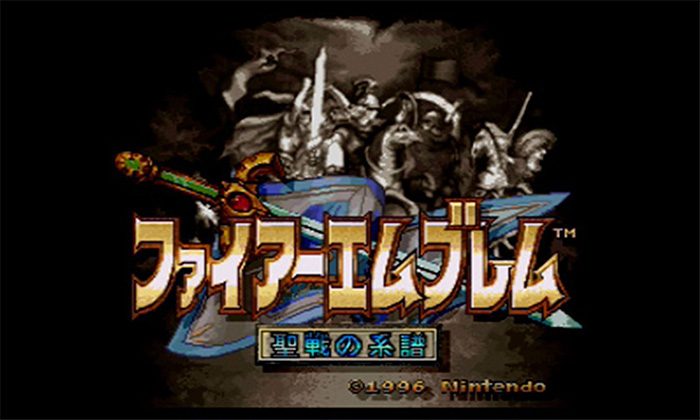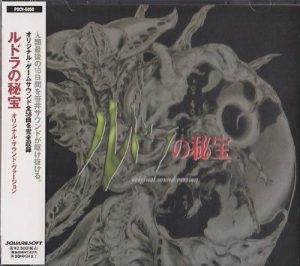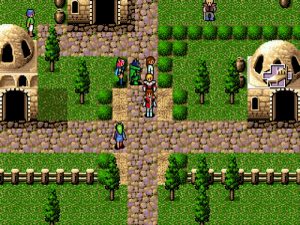
We’re back again with more notable RPGs that never left the Japanese Super Famicom! This time we’re focusing on strategy/tactical RPGs, a subgenre sadly underrepresented on the Super Nintendo outside of Japan. Once again, these games are ones that never saw an international re-release, remake, or multi-console version so titles like Front Mission and Chaos Seed are except. Let’s get going! Turn 1, Start!
Fire Emblem: Seisen no Keifu (Fire Emblem: Genealogy of the Holy War)

- Publisher: Nintendo
- Developer: Intelligent Systems
- Release Dates: May 14, 1996
As many fans of Intelligent Systems’ long-running strategy RPG series are already aware of, many Fire Emblem games, especially the early entries, have never been released outside of Japan and Genealogy of the Holy War is a prime example of one of the great games we missed out on. This game is notable for its complex political story, comparable to something like the real-world House of Habsburg, huge armies and maps, and the introduction of many gameplay mechanics that would become series staples like the class and personal skill systems and the character relationship simulation aspect that is arguably what the modern games are most known for today and this time is tied into the story seamlessly, as you might have inferred from the ‘Genealogy’ in the title.
Genealogy of the Holy War takes place across multiple generations on the continent of Jugdral. The first story follows Sigurd, a prince of the Kingdom of Grannvale who finds himself having to form and lead an army to defend Jungby Castle from an unexpected invasion from the neighboring Verdane Kingdom after the majority of Grannvale’s soldiers were dispatched to Darna in the Kingdom of Isaach to quell a barbarian invasion. Without going into spoiler territory, Genealogy of the Holy War is one of the most intense Fire Emblem stories ever and,together with its gameplay innovations, one of the most transformative entries in the long-running series. It also boasts one of the richest soundtracks with over 100 songs and charming, well-crafted artwork.
Treasure Hunter G
- Publisher: Square
- Developer: Sting
- Release Dates: May 24, 1996
Developed by one of the quirkiest game studios out there who would later bring us titles like Dokapon Kingdom, Yggdra Union, and Knights in the Nightmare, Treasure Hunter G is a turn-based strategy RPG that stands out most for its small-scale tactical battles that feel like something between Chrono Trigger and Shining Force but really is more of its own thing. We get visible overworld enemies, a tactical grid based around spheres (cubes?) of influences that affect your action points, and different battle styles for each character. Some other unique points include a finite amount of gold that can only be found in overworld chests or through selling items (not from winning battles), separate defense stats for front and rear attacks, and being able to throw items at friends and foe alike during battle.
Treasure Hunter G follows the G brothers, Red and Blue, who are searching the world to find their long-lost father. In their journeys, they discover that a cartoonishly evil fellow called Dark Lord is trying to resurrect a giant skeletal dragon called Bone Dino by capturing the world’s guardian fairies. Along the way, the brothers end up rescuing a mysterious partial amnesiac girl named Rain and her violin-playing pet monkey mage Ponga who join their quest to stop Dark Lord. While the story in this game isn’t really that important or memorable, it does have its moments and you’ve got to love Ponga at least. Overall, Treasure Hunter G is a fun title that strategy RPG aficionados should check out!
Energy Breaker
- Publisher: Taito
- Developer: Neverland
- Release Dates: July 26, 1996
Brought to us by the developers of the Lufia series, who would later go on to work on games like the Rune Factory series, Energy Breaker is a hardcore isometric tactical RPG that plays differently than any other thanks to its unique balance points system that ties into every action you take and energy points that you gain through leveling up and allocate into four different elements which each also have a light and dark side. Some other touches include being able to freely explore the world in between battles and choosing what kind of attitude/emotion you speak within the dialog system.
Energy Breaker also has an interesting story and fantastic character designs by Trigun creator Yasuhiro Nightow. You play as Myra, a young woman who has lost her memory and is told by a fortune-teller that she should seek out a man called Leon, "The Whirlwind General" in a nearby forest for clues to her past. There she ends up meeting a scientist called Renard, and his robot assistant Gulliver and ends up joining their quest to find a magical flower that can bring people back to life. While perhaps sounding a bit generic at first, Energy Breaker’s story delves into some heavy subjects like religion vs. science and, without spoiling anything, is very much worth your time. Both the spritework and soundtrack are excellent as well, making it another potential favorite title for any fans of retro RPGs, plus it’s implied that it takes place in the same universe as the Lufia games so fans of those would be remiss not to check it out!
Final Thoughts

In closing, we hope that this article might have shed light on some interesting RPGs that you might not have heard of before and given you greater insight into the beloved world of 16-bit RPGs that so many of us enjoy. Let us know your own thoughts in the comments section below and try to play these games any way you can! Thanks for reading and be sure to stick around Honey’s for more of all things awesome, retro gaming obscurities and otherwise! Until next time… Oki out!
Recommended Post
Rad Retro RPGs Exclusive to the Super Famicom - Part 1
Recommended Post
5 Great Monster Collection RPGs You Might Have Missed
Recommended Post





